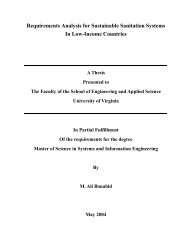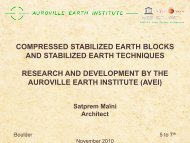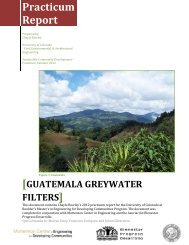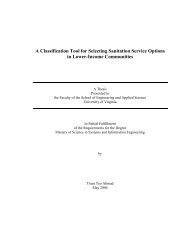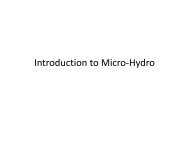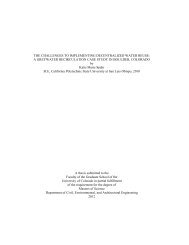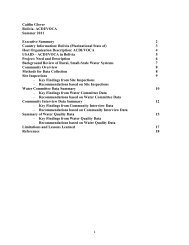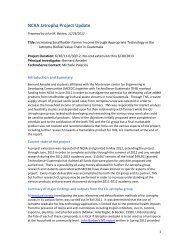SCEBs - University of Colorado Boulder
SCEBs - University of Colorado Boulder
SCEBs - University of Colorado Boulder
You also want an ePaper? Increase the reach of your titles
YUMPU automatically turns print PDFs into web optimized ePapers that Google loves.
2.1. SCEB Technology Advantages<br />
The motivation <strong>of</strong> this thesis is the standardization <strong>of</strong> earth as an alternative<br />
building material. Concrete has grown into the most important building material over the<br />
last century and in industrialized nations the annual production amounts to 1.5-3 tons per<br />
capita (Glivand, Mathisen, Nielsen; 2005). The use <strong>of</strong> cement in the production <strong>of</strong><br />
concrete contributes vastly to the construction industry‟s carbon footprint.<br />
Cement production is responsible for 10% <strong>of</strong> global CO2 emissions (Keefe, 2005).<br />
Aggregate is <strong>of</strong>ten created by mining, and crushing rock to the desired specifications.<br />
Building sites are rarely located within proximity to the mining sites, necessitating<br />
additional energy requirements to transport the materials. This process requires a huge<br />
amount <strong>of</strong> “embodied energy”. Embodied energy is the sum <strong>of</strong> all the various processes<br />
involved to implement a material into production. Keefe (2005) <strong>of</strong>fers an embodied<br />
energy consumption value for various building materials. “Concrete block” registers<br />
600-800 kWh/m 3 and “Earth” registers 5-10 kWh/m 3 , clearly indicating an advantage to<br />
earth building. The addition <strong>of</strong> cement triggers a chemical reaction which emits<br />
noticeable amounts <strong>of</strong> carbon dioxide into the atmosphere. One mass unit <strong>of</strong> cement<br />
generates approximately an equivalent mass unit <strong>of</strong> CO2 emissions (Glivand, Mathisen,<br />
Nielsen; 2005).<br />
To investigate additional advantages <strong>of</strong> <strong>SCEBs</strong>, current research is investigating<br />
the indoor climate regulating effects <strong>of</strong> structures built from earthen blocks. Minke<br />
(2006) presents data showing that earthen construction materials are able to absorb and<br />
desorb moisture more efficiently than any other building material, allowing them to<br />
regulate indoor climate. He suggests a range <strong>of</strong> 40-70% relative humidity as ideal for<br />
7



